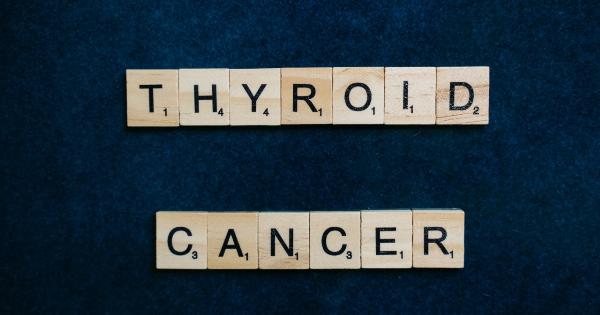Obesity is a worldwide concern due to its association with various types of cancer, including thyroid cancer.
Central obesity, also called abdominal obesity or visceral obesity, can lead to metabolic disorders resulting in inflammation and hormonal imbalances that stimulate tumour growth.
What is Central Obesity?
Central obesity is defined as excess fat accumulation around the abdomen and internal organs, usually resulting from physical inactivity and a diet high in saturated fats and simple carbohydrates.
This form of obesity leads to an increase in waist circumference, which is a strong predictor of chronic metabolic diseases such as type 2 diabetes and cardiovascular disease. The waist circumference measurement that indicates central obesity in males is greater than or equal to 40 inches (102 cm), and in females, it is greater than or equal to 35 inches (88 cm).
What is Thyroid Cancer?
Thyroid cancer originates in the thyroid gland, a butterfly-shaped gland located in the neck that produces hormones that regulate metabolism. The most common types of thyroid cancer are papillary thyroid cancer and follicular thyroid cancer.
They account for approximately 80% to 90% of all thyroid cancer cases and are usually curable when detected early. However, in some cases, thyroid cancer can spread to other parts of the body and become more challenging to treat.
Central Obesity and Thyroid Cancer
Several studies have shown an association between central obesity and thyroid cancer.
One possible explanation is that excess body fat triggers a cascade of immune and metabolic changes that disrupt thyroid hormone production and increase the production of oestrogen. Oestrogen is known to promote cell proliferation, increase angiogenesis, and reduce apoptosis, which can cause cellular damage and increase the risk of cancer.
Central obesity can also lead to chronic inflammation, which has been implicated in several types of cancer, including thyroid cancer.
Insulin Resistance and Thyroid Cancer
Insulin resistance, a hallmark of central obesity, can also contribute to the development of thyroid cancer. Insulin resistance occurs when cells become less responsive to insulin, a hormone that regulates blood sugar levels.
As a result, the body produces more insulin, which can stimulate the growth of cancer cells and increase the risk of cancer. Several studies have shown that insulin resistance is associated with a higher risk of thyroid cancer, especially in women.
Thyroid Function and Central Obesity
Central obesity can disrupt thyroid hormone production and lead to hormonal imbalances that stimulate tumour growth.
Thyroid-stimulating hormone (TSH), produced by the pituitary gland, stimulates the thyroid gland to produce thyroid hormones (T3 and T4). Excess body fat can cause the pituitary gland to produce more TSH, leading to an increase in thyroid hormone levels. This can result in hyperthyroidism, a condition in which the thyroid gland produces too much thyroid hormone.
Hyperthyroidism has been associated with an increased risk of thyroid cancer.
Prevention and Treatment
Preventing central obesity through a healthy diet and regular physical activity is the best way to reduce the risk of thyroid cancer.
A diet rich in fruits, vegetables, and whole grains and low in saturated fats and simple carbohydrates can help control body weight and reduce inflammation. Regular exercise can also help control body weight and reduce insulin resistance. If thyroid cancer is detected early, it is usually treatable with surgery, radiation therapy, or a combination of both.
However, advanced thyroid cancer may require chemotherapy or targeted therapy.
Conclusion
Central obesity is a significant risk factor for thyroid cancer. The hormonal and inflammatory changes that occur with excess body fat can lead to tumour growth and disrupt thyroid function.
Preventing central obesity through a healthy diet and regular physical activity can reduce the risk of thyroid cancer. Early detection and treatment of thyroid cancer are crucial to improve the chances of a positive outcome.




























